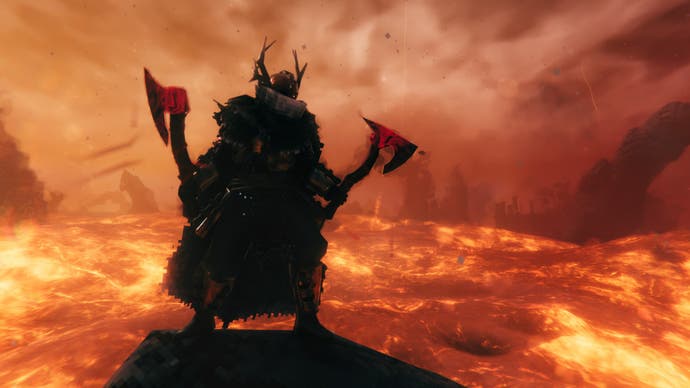Valheim's Ashlands biome is deadly - but with its new weapons, so are you
Why don't you come on over, valkyrie?
Spoiler warning: This article contains many details about the Ashlands update - now available to test publicly - that some players may wish to keep a surprise. You have been warned!
For those who have journeyed through Valheim's biomes, the prospect of facing a gruelling challenge in the upcoming Ashlands update will not be a major shock. Its predecessor, the Mistlands, brought with it formidable foes, steep cliffs and visibility challenges - and with only the Ashlands and Deep North left to conquer in Valheim's storyline, it's almost a given that both these biomes will be tough to beat. Yet somewhat alarmingly, the dangers of the Ashlands begin before you've even set foot on dry land. As I sail towards the Ashlands in a preview session with Iron Gate lead artist Robin Eyre and senior developer Jonathan Smårs, the sea boils around us, red lightning flashes overhead, and a forest of pointed rocks hamper our progress towards the mainland. Birds mob our ship, and while carefully navigating a narrow passage, a terrifying bone serpent emerges from the deep. "It's going to be a really difficult, challenging place to go," Smårs admits. "It's going to be endgame."
Our journey is made possible thanks to a heavy-duty boat: a massive ship called the Drakkar, which in typical Valheim fashion, can only be crafted with ingredients acquired from defeating the Mistlands' final boss. The Drakkar is immune to damage from the boiling water, which regular wooden ships cannot withstand for long before being destroyed. This is a lethal lesson I imagine some curious souls will learn first-hand, should they attempt to reach the Ashlands before they are ready. Unusually for a Valheim biome, the Ashlands does not border any other environments, and can only be accessed by sea. This difficult journey makes reaching the Ashlands a "chapter in itself," as Smårs explains it, but it also gives this biome a uniquely dangerous feel. There's no easy way of getting in - and once you arrive, there's no easy way of getting out.
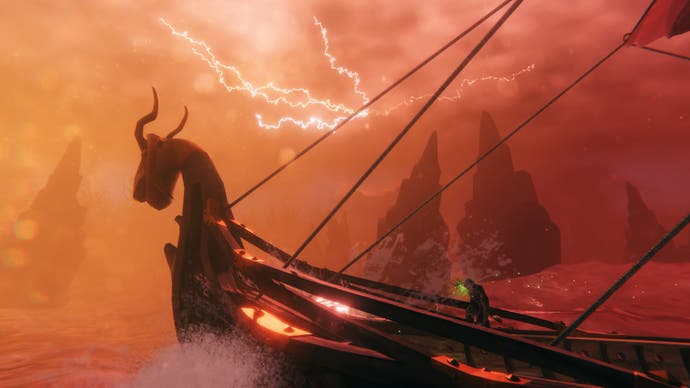
Establishing yourself in the Ashlands therefore requires picking a quiet spot and quickly building a stronghold where you can place a portal, yet even this can prove a challenge. Cinders rain down from the sky that can set your wooden structures on fire, and it's easy to be swarmed by hordes of enemies. High numbers of skeletal mobs appear throughout the biome, and are most frequently found near spawners (stones that can be destroyed by the player). But there are bigger and more dangerous monsters in the Ashlands than these. As we move further inland on our expedition, we encounter the Morgen - an unholy combination of spider, crab, and bones that lunges at the player with startling speed. Then there's the Fallen Valkyrie: a flying enemy which can attack with claws, fireballs and a spinning move that can knock you back (sometimes into a pool of lava). Asksvin, meanwhile, seem to be the older cousins of the Meadow's Necks, and harbour an equal level of hatred towards Vikings. These enemies are tough to take down on their own, but when running around and dodging their attacks, it's easy to accidentally aggro a whole new set of monsters - creating complicated fights that can be difficult to manage.
"All the enemies in Ashlands have these unique abilities so when they come together, they feel like an army," Eyre tells me. "You'll see a bigger diversity in enemy abilities and what they do. If you manage to get a Morgen, Asksvin and Fallen Valkyrie on you, I wouldn't recommend fighting that combination, because it's super difficult to win."
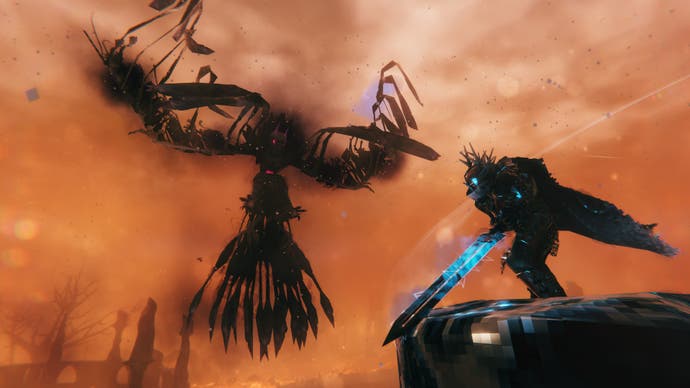

One of the ideas behind this complicated mixture of enemy mechanics - and the sheer density of enemies and spawners - is to encourage players to take a careful approach to navigating this biome. Instead of running in and dying quickly, Eyre advises that the best way to make progress is through gradually clearing a path through the landscape. "It's going to be much more tactical," he adds. "In that sense, be careful, tread carefully and try to win ground slowly. The most difficult part is going to be in the beginning... you're supposed to feel very lost."
For those who found the difficulty spike between the Plains and Mistlands biomes too challenging, this may all be starting to sound rather worrying. When the Mistlands update was first introduced, the hassle of navigating the vertical environment - combined with the hard-hitting Seeker enemies and limited visibility - meant that many found the biome frustrating. This resulted in an eventual nerf to the biome that reduced spawn rates and enemy aggression (and arguably went a little too far in the process). With the Ashlands once again upping the difficulty, some may have concerns that history could repeat itself in this update. But the good news is that Valheim now has difficulty modifiers, so those unhappy with the default Ashlands experience do have the option of dialling things down. "We balanced [the Ashlands] around the vanilla experience... but people should play like they want to play," Smårs says. "If people really think this is going to be too hard for them, it's nice to know that they can just turn it down a little bit and enjoy it the way that they want to. Going into Mistlands, that choice wasn't really there, so it will be interesting to see if that helps the reception of it in any way."
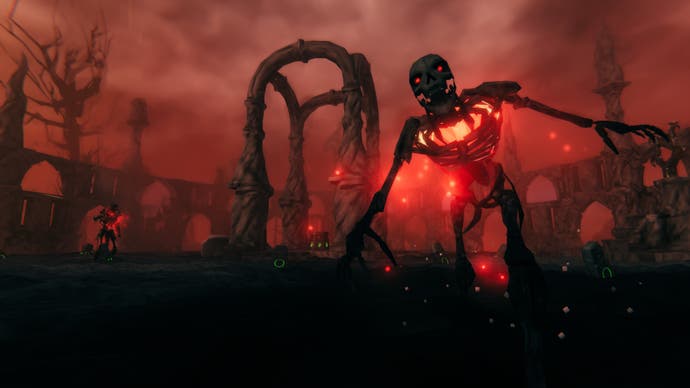
Another difference between the Mistlands and Ashlands is that visibility is no longer the main hindrance, with the new challenge being the sheer number of enemies you can pull. For the most part, the Ashlands' environment is also easily navigable, although there's still plenty of danger in the form of smouldering fires and pools of lava. The method in which you farm flammetal - a vital resource for upgrading your gear - could potentially cause some headaches. These deposits are found in the middle of vast pools of lava, presenting a logistical challenge in how to actually reach them. Building outwards is one option, but there are also new throwable 'basalt bombs' to help you reach the ore. These create temporary platforms which you can stand on for about 50 seconds. With both the flammetal ore 'towers' and basalt platforms being fairly unstable, however, there will almost certainly be some lava-related workplace accidents. Eyre says he was keen to "force players to go out into the danger zone," although he will be keeping an eye on the mechanic during the public beta test, as having to repeatedly retrieve graves from lava could end up feeling "a bit too harsh".
And though the Ashlands are unforgiving, the devs are at least giving you some powerful tools to help you survive there. There's a shield generator, for instance, that can create a large glowing dome over your property - handy for preventing any fire damage. One of the most significant additions in this update is the stone portal, which for the very first time, will allow Vikings to take metal through portals. In previous biomes metal had to be manually shipped to new bases: a design decision that encouraged perilous journeys across oceans and continents. The new stone portal therefore marks a pretty major change in Valheim's overall rhythm. (Given how difficult it is to sail into the Ashlands, too, it's a decision that will likely save players a lot of pain.) With few biomes remaining in Valheim's story, and the Ashlands providing a more combat-focused challenge, Eyre explains that it "feels kind of right giving the portal that can transport metals now."
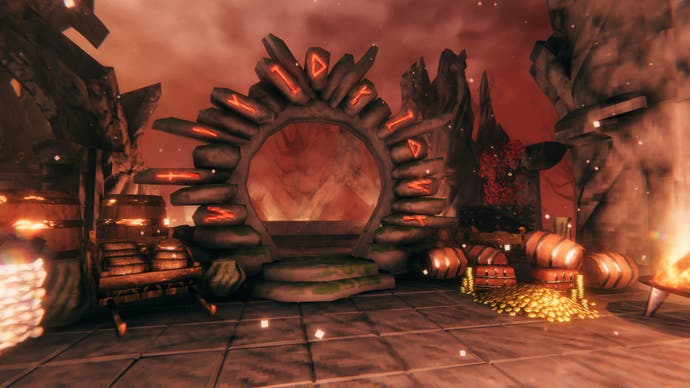
Once you've successfully acquired some flammetal ore, this should also open up a wealth of new combat opportunities. Many of the weapons introduced in the Ashlands update can eventually be infused with magical properties, with the effects termed 'blood', 'storm' and 'nature'. Rather than simply doing different types of damage, these slightly alter your playstyle: chain lightning is a great option for groups of enemies, while the blood effect will do more damage depending on how low your character's health is. "It's very situational... it makes the combat a bit more interesting, I think, to choose different paths rather than just damage," Smårs explains. "Ashlands is a difficult biome," Eyre adds, "and with that said, I think it's important to give players their desired playstyle when it comes to armour and weapons. I think we're being fair by giving you as many options as we can."
The update brings a lot of new options for magic users, too, with Eyre explaining that there was a "staff juggling" design philosophy behind this choice. The new staffs allow you to summon additional forces such as trolls and tentacle-like vines - handy when you need minions to tank some hits - while the shotgun-like Dundr can do some serious damage. The staves from the Mistlands remain viable here, but you now have a larger toolkit of magical weapons to pick from.
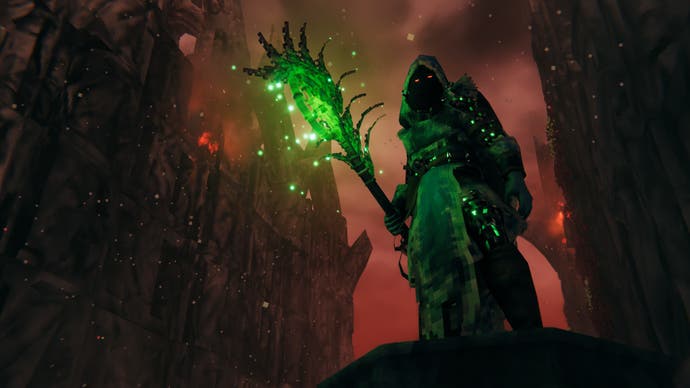
Acquiring the materials to upgrade your weapons will, however, require a trip to the inland areas of the Ashlands. Here you will find lava pools, arches of igneous rock, and ominous dark structures called fortresses. Guess what? The items you need are inside these castles, so you'll need to break through the walls to grab them. There are siege weapons for this exact purpose, with a battering ram that can punch through stone, and a catapult that can launch explosive missiles. If you're wearing a feather cape, it's also possible to launch yourself on one of these catapults - as I found out when Smårs and Eyre encouraged me to fire myself over a fortress wall. Needless to say, things didn't turn out too well for me when I got there: it's pretty tough to take on an entire compound of enemies all by yourself. But goofiness is one of the aims here - with the catapults being deliberately hard to aim, and part of the fun being figuring out ways to break in. It's apparently possible to build your way over the walls, for instance - but you may have quite a few missiles hurled your way during the process.
Eyre explains that the idea behind the fortresses is to mix up the rhythm of Valheim's biomes, which have often required players to venture down into dungeons in search of materials. In comparison to these, "the fortresses give you a little bit of freedom, you use your own tactical mind to try to overcome them... so do whatever you want - go free, go wild," he says. He adds that the fortresses are balanced so that they can be completed solo or in multiplayer, but regardless of the number of friends you bring, it will be a tough battle. "The whole idea is you've got the entirety of Valheim behind you: ballistas, food, potions, everything. So you need to bring everything you've got to the battlefield."
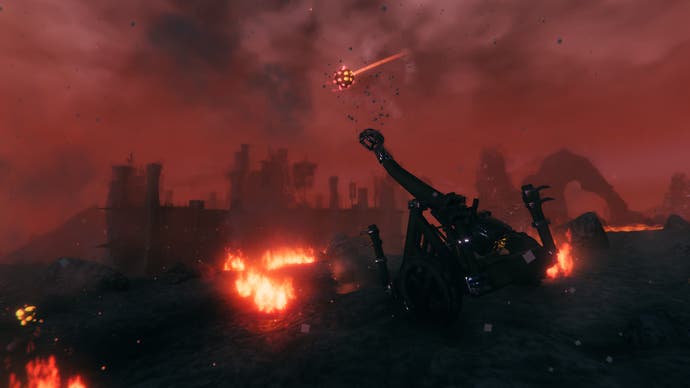
As you'd expect from a Valheim biome, the update also brings plenty of new additions in terms of food and building materials. There are 50 new build pieces in this update, many of which have a distinctly gothic feel to them. If you're a fan of flying buttresses, you're going to really enjoy these new columns and arches. Then there's the ashwood building material, which introduces a new type of wooden wall and flooring: great if you want to build yourself a decorative wooden lodge, perhaps in a less flammable biome. Personally, I might be most excited by the plantable vines, which can be grown up the side of buildings, and even produce grapes. Time to build a vineyard in the Plains.
There are plenty of surprises to keep players busy in the Ashlands, but attention will now surely turn towards what's next in Valheim's future. For the development team, the next phase will be entering pre-production for Deep North, the final biome in Valheim's storyline. This is planned to be part of a 1.0 update for Valheim, which will officially bring the game out of Early Access. Although Eyre and Smårs are reluctant to reveal too much about this update, Eyre tells me there is "a plan for how [Valheim] ends," although this could change due to the "organic and iterative" way in which the development team works. Along with the biome and a final boss, Deep North will likely feature a few extra surprises. "I do think we have quite a good idea of how to finish the game to make it feel like an actual 1.0 release, rather than an [Early Access] release where we are just done," Smårs says. "We will definitely be wanting to upgrade some other parts, not only Deep North, for the 1.0 release."
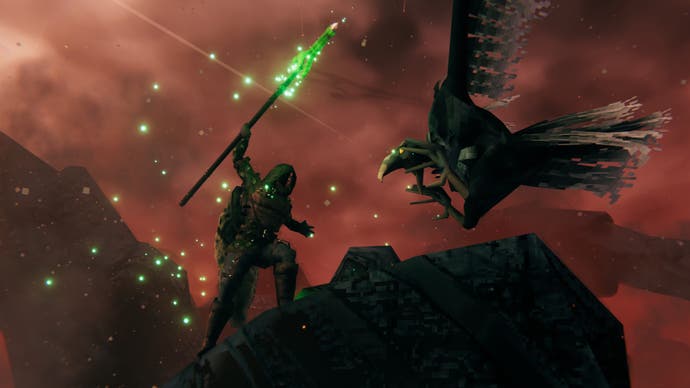
On this note, I ask whether there are any plans to update the Oceans biome - an idea floated in a previous roadmap. Smårs says the team has discussed the idea and it's something they want to do, although it's too early to say whether changes to the oceans would come in the 1.0 update or at a later point. One thing that's for certain, however, is that there are plans to continue updating Valheim even after the release of Deep North. "It's not going to be a live service game, per se, where we're going to continue updating it forever," says Smårs. "But hopefully, it will still have a long lifecycle... I mean, we will probably be doing updates for post-1.0 as well."
"We haven't even got started on Underheim yet," jokes Eyre. "[Valheim] is the made-up 10th branch of the Yggdrasil tree, who says that there's not an 11th branch? Maybe we get to go to Underheim, or Sundheim, or to other places. I think there's a lot of things that we can go and explore. I think as long as we [and the players] feel there's something to add... we will be adding stuff for a long time to come."
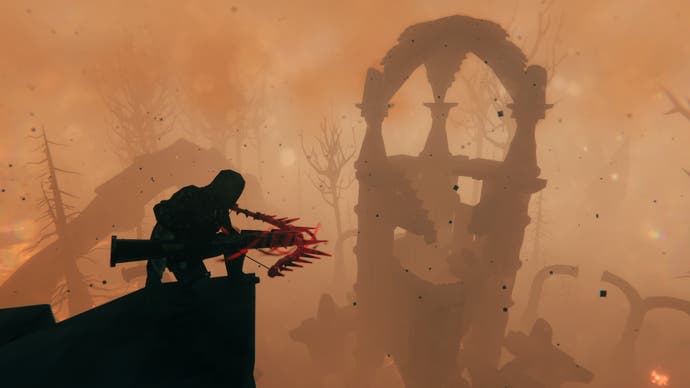
Having spent some time exploring the Ashlands over the past few weeks, I have found myself (once again) impressed by the atmosphere and environmental design of Valheim's world. Due to the Ashlands' location in the south, there's slightly less variety than in previous biomes, where different environments merged together to create unusual border areas. But the Iron Gate team has managed to add elements of interest within the biome itself, with the Ashlands' forested coastal areas feeling very different from its inland, lava-filled flats. It's threatening on a regular day, but when a storm rolls in, the Ashlands transforms into a moody, otherworldly landscape. And of course, this is all aided by another brilliant biome soundtrack that establishes a suitably menacing tone.
I remain a little concerned, however, that certain aspects of the Ashlands' design could tip the gameplay from difficult-but-fun into frustrating. The overwhelming number of enemies - and the challenge of building a base in the biome due to environmental hazards - could make the first few hours in the biome feel pretty dispiriting. Equally, I wonder whether the challenge of retrieving flammetal from the lava will result in infuriating death loops where it feels impossible to recover tombstones. Once you gain access to the biome's huge range of new tools, however, dealing with enemies becomes far easier, and the fights achieve a new level of chaotic silliness. We'll have to see how players react to these challenges on the public test server, but with difficulty modifiers now an option, at least there's a way for players to tone things down a notch. And if you're really struggling to fish your items out from the lava... there's always the Body Recovery Squad. I imagine they're about to be in hot demand.
